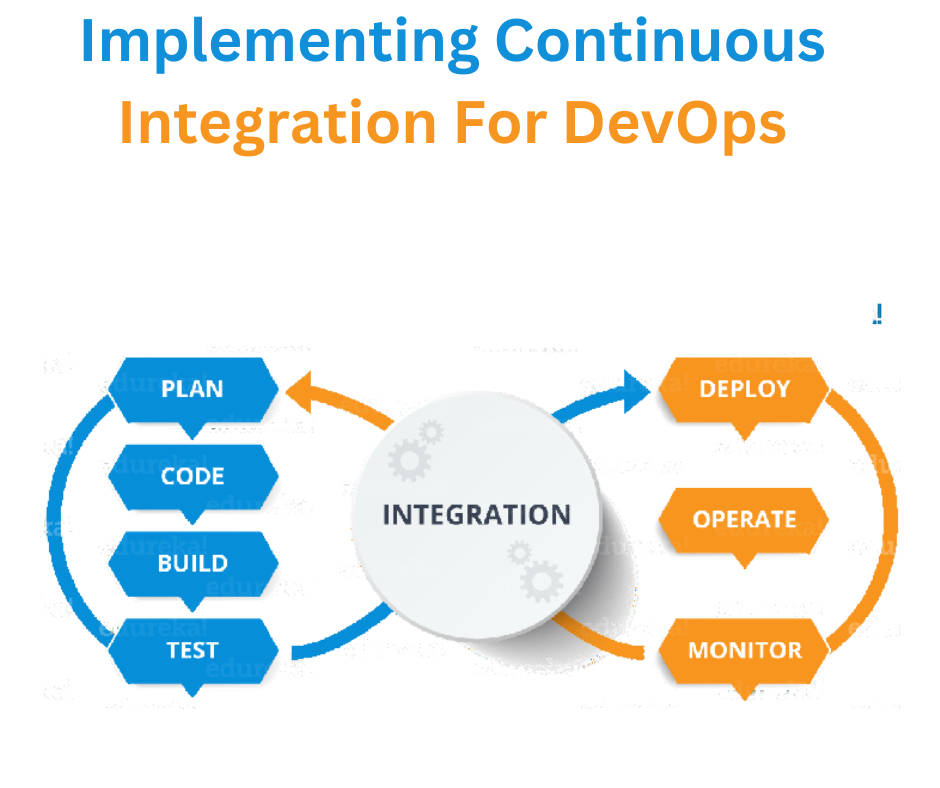Ready to learn about one of the key practices of DevOps? Continuous Integration is essential for code to be always ready for testing and deployment. Check out our blog post to learn more.
Implementing Continuous Integration For DevOps
DevOps is a term that has become increasingly popular in recent years. It represents the marriage of traditional development practices with the fast-paced environment of a modern IT organization.
Continuous Integration (CI) is one of the key practices in DevOps, and it’s essential for ensuring that code is always ready for testing and deployment. In this blog post, we’re going to provide an introduction to Continuous Integration and explain how to set it up in your organization. We’ll also explore the benefits of Continuous Integration, and show you how to make it work for your team. By the end of this post, you’ll have a better understanding of how Continuous Integration works and how it can help your DevOps efforts.
Introduction To Continuous Integration
CI is a DevOps practice that helps to ensure that the code that is being developed is stable and ready for use. CI helps to automate the process of compiling, testing, and deploying code. This makes it easier for developers to avoid making mistakes and ensures that the code they are working on is always up to date.
There are many benefits of implementing CI within your development process. Some of the most notable benefits include:.
- – Reduced development time – CI helps to ensure that your code is always stable and ready for use, which can save you a lot of time in the long run.
- – Increased reliability – By automating these processes, CI can help to increase the reliability of your software overall. This means that you’re less likely to experience any unexpected bugs or issues during development or testing.
- – Improved communication between developers and testers – With continuous integration in place, you can easily communicate updates and changes between developers and testers as they happen. This helps to ensure that everyone involved with the project is on the same page and understands what’s happening at all times.
To get started with CI, you first need to set up Jenkins – a popular open source CI toolkit. Once Jenkins is installed and configured, you can start building your first job using it. After completing this step, everything will be ready for use!
Once your job has been created, it will be running constantly in perpetuity – so there’s no need to worry about stopping it or restarting it every time a new commit is made! Finally, once your job has completed running successfully, you can view its results by clicking on its “Details” tab located under “Projects” in Jenkins Dashboard window.
How To Set Up Continuous Integration
Continuous integration is a software development process that helps to ensure the quality of your codebase. By continuously integrating your code into your repository, you can catch errors and problems early on in the development process. This helps to avoid long delays in bug fixes or feature rollout, and it also ensures that your code is always up to date.
Take advantage of Big Data analysis through DevOps with the Kelly Technologies advanced DevOps Course in Hyderabad.
To set up a continuous integration system, you will need to gather a few key pieces of information. First, you’ll need to decide what type of continuous integration system best suits your project.
There are three main types of systems: manual, automated, and hybrid. Next, you’ll need to decide on how the system will be operated – either through a CI server or through an IDE or command line tool. Finally, you’ll need to set up the CI server or tools themselves.
Once all of this information is gathered and put into place, Continuous Integration will help improve the quality and speed of your software development projects. The benefits are clear – better code quality leads to fewer bugs and shorter delays in product launches; faster project turnaround means less time wasted on debugging; and happier customers mean more repeat business for your business!
The Benefits Of Continuous Integration
CI is a practice that helps to speed up the development process. It involves integrating code into your project several times a day, which helps to ensure that your code is always up to date and error-free. Additionally, CI helps to automate the testing process, which makes sure that your software functions as intended.
The DevOps Training in Hyderabad course offered by kelly technologies can help you prepare yourself for a leadership role in this area.
There are many benefits of implementing continuous integration in your development workflow. For example, it can take less time for you to get feedback on your code changes – especially when using automated testing tools.
This means that you can quickly identify and fix errors before they have a serious impact on the project. Furthermore, CI allows team members to communicate more effectively as all changes are automatically logged and tracked. This makes it easier to track progress and stay on top of changes.
Overall, implementing continuous integration is a great way to improve the quality of your codebase and speed up the development process overall.
In Conclusion
If you have an interest in data-analytics, this Seven Article will be usable for you.
Continuous integration is a powerful tool that can help developers avoid costly mistakes and speed up the software development process. If you’re not already using continuous integration, we encourage you to give it a try. You may be surprised at how much it can improve your workflow.

